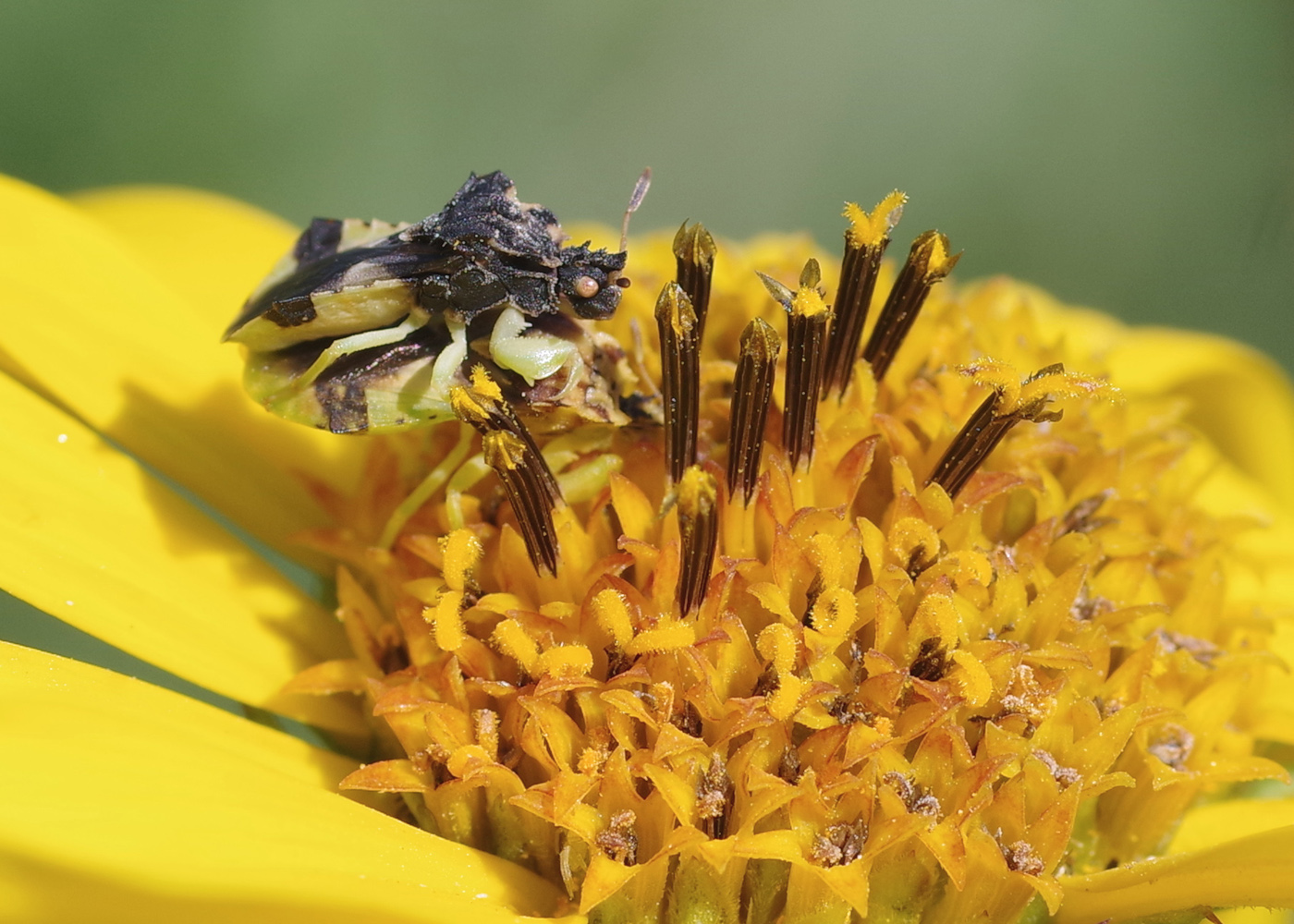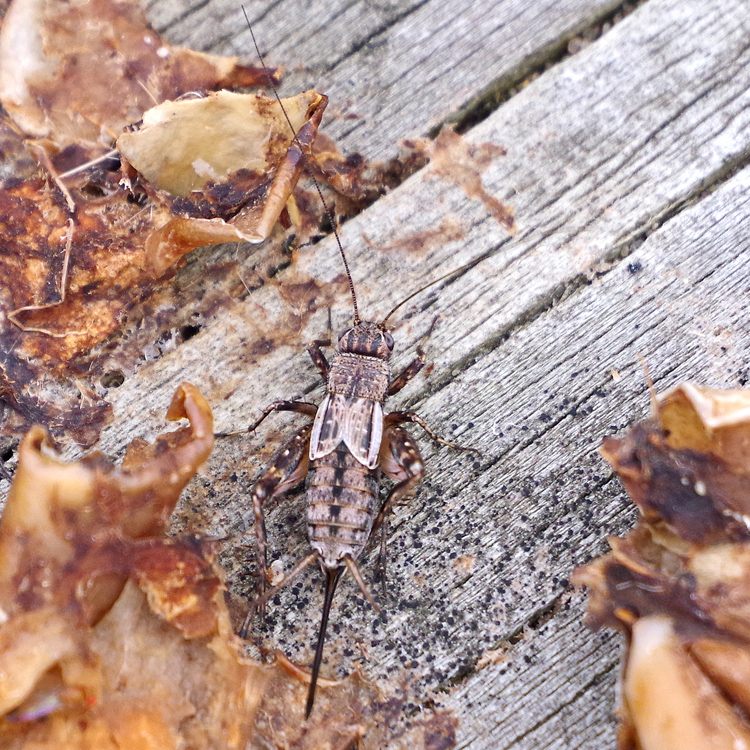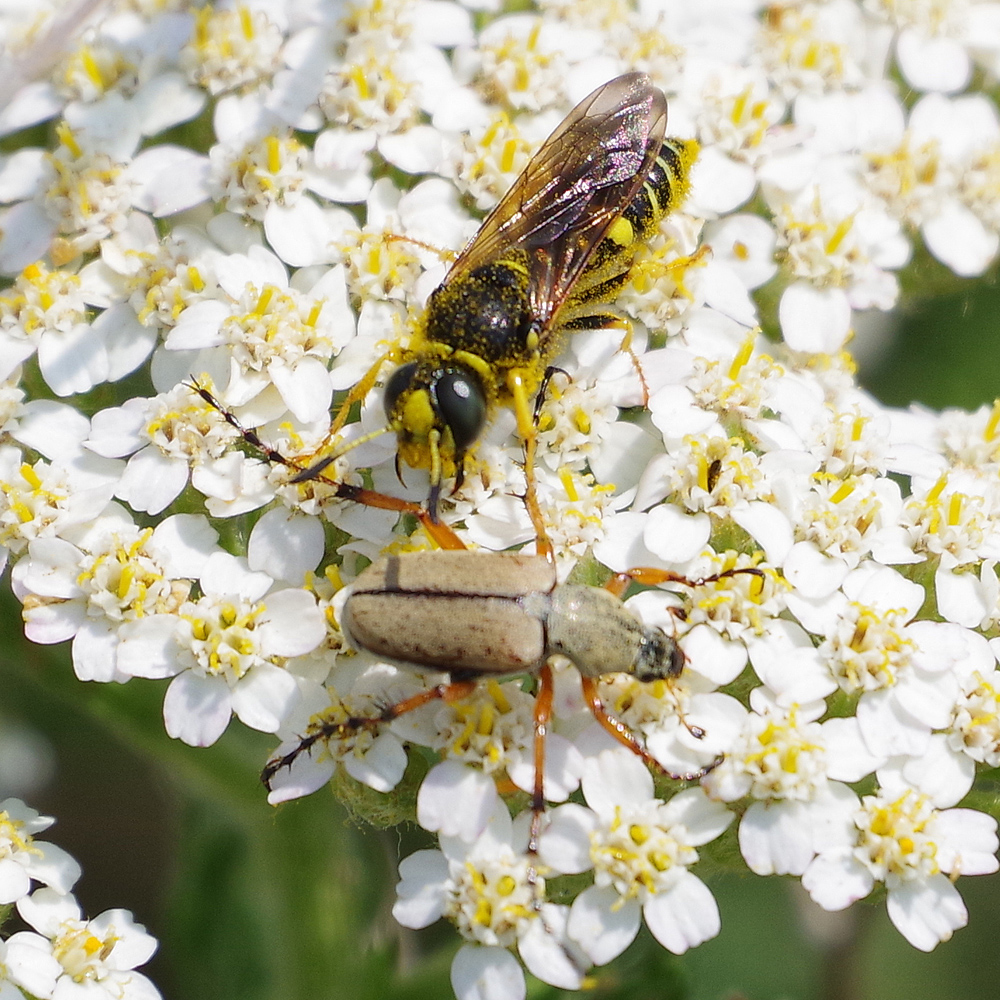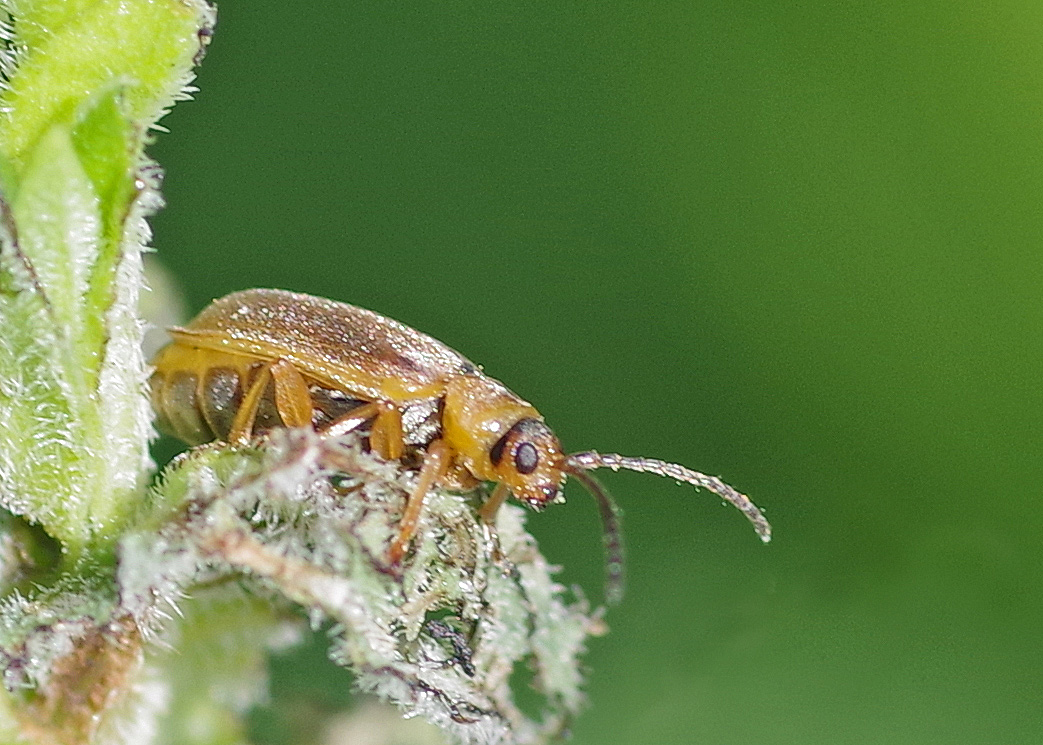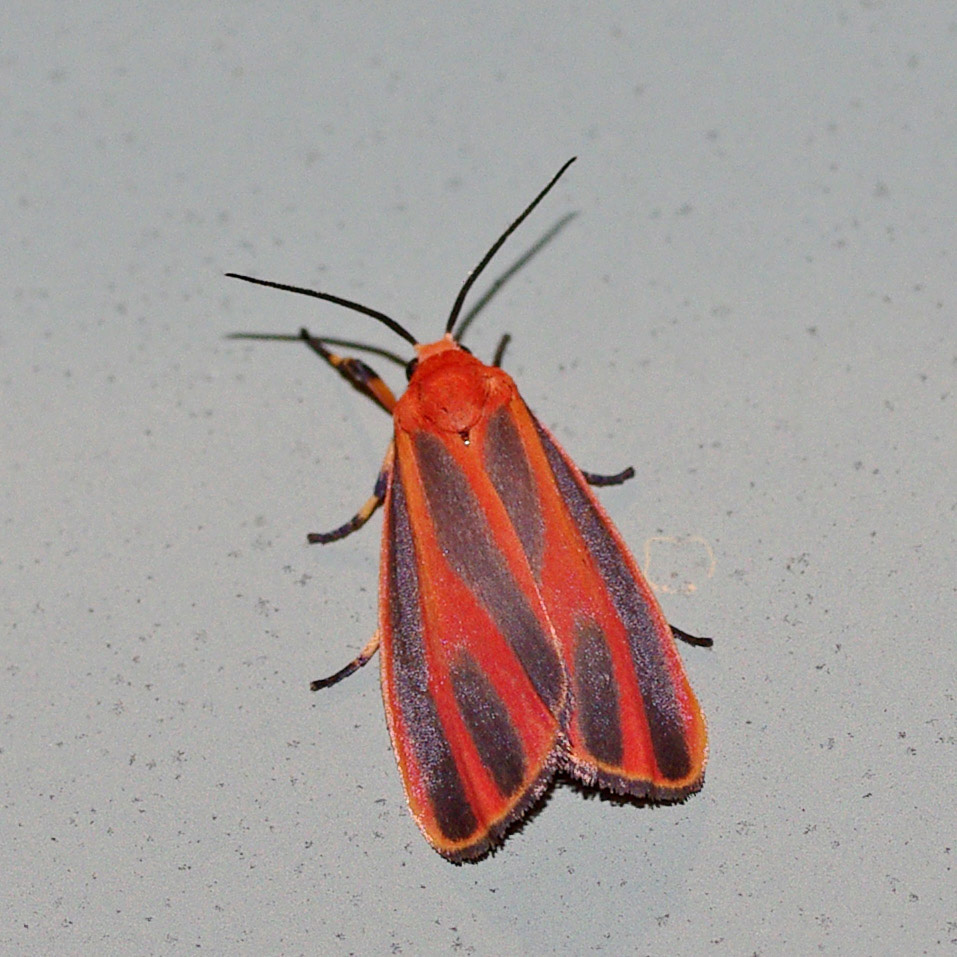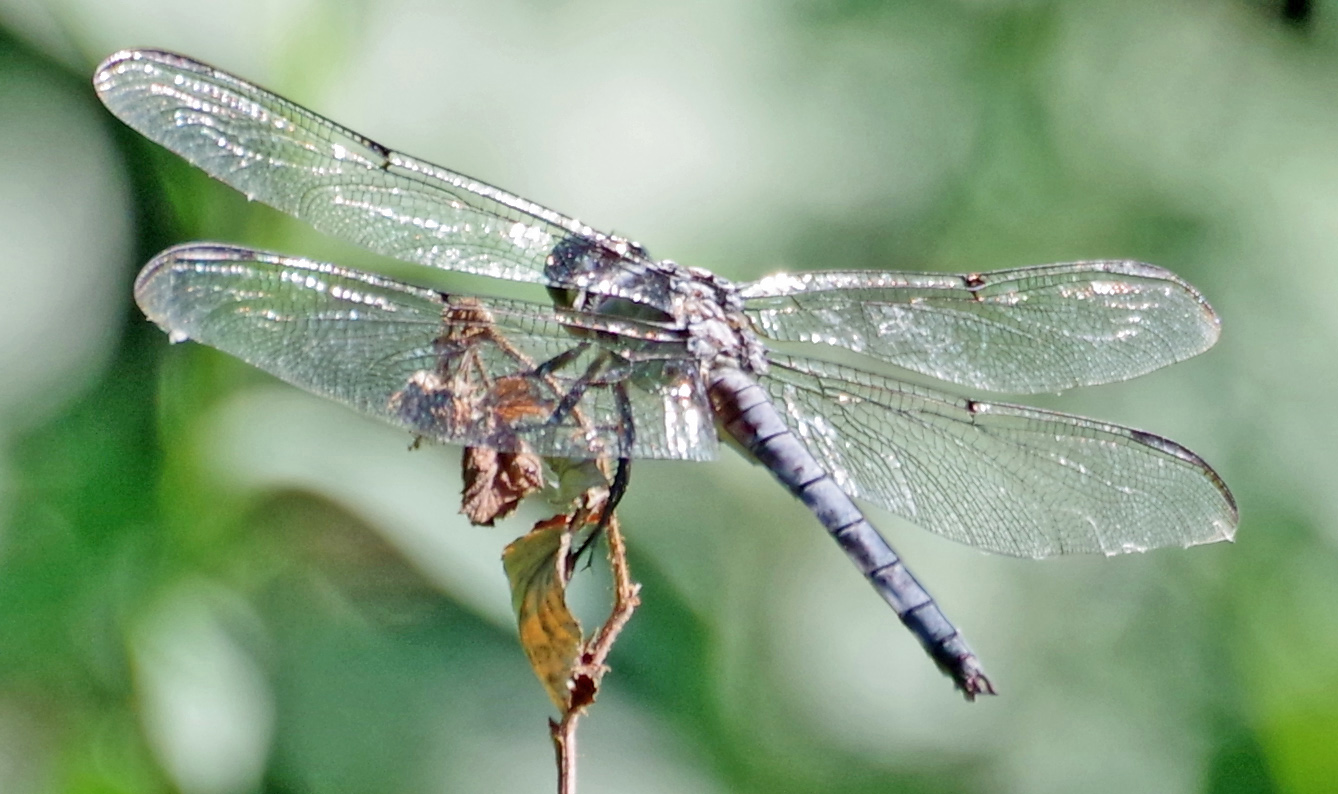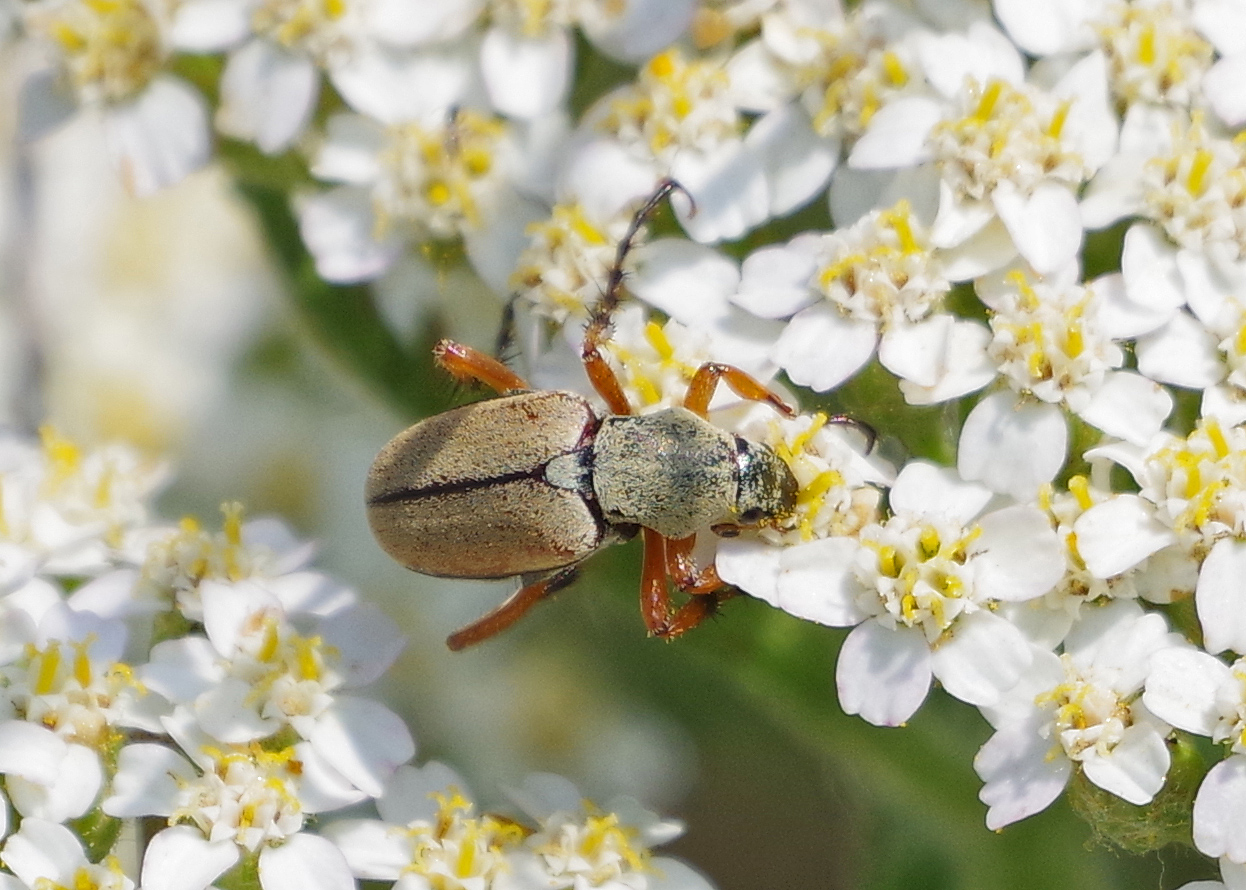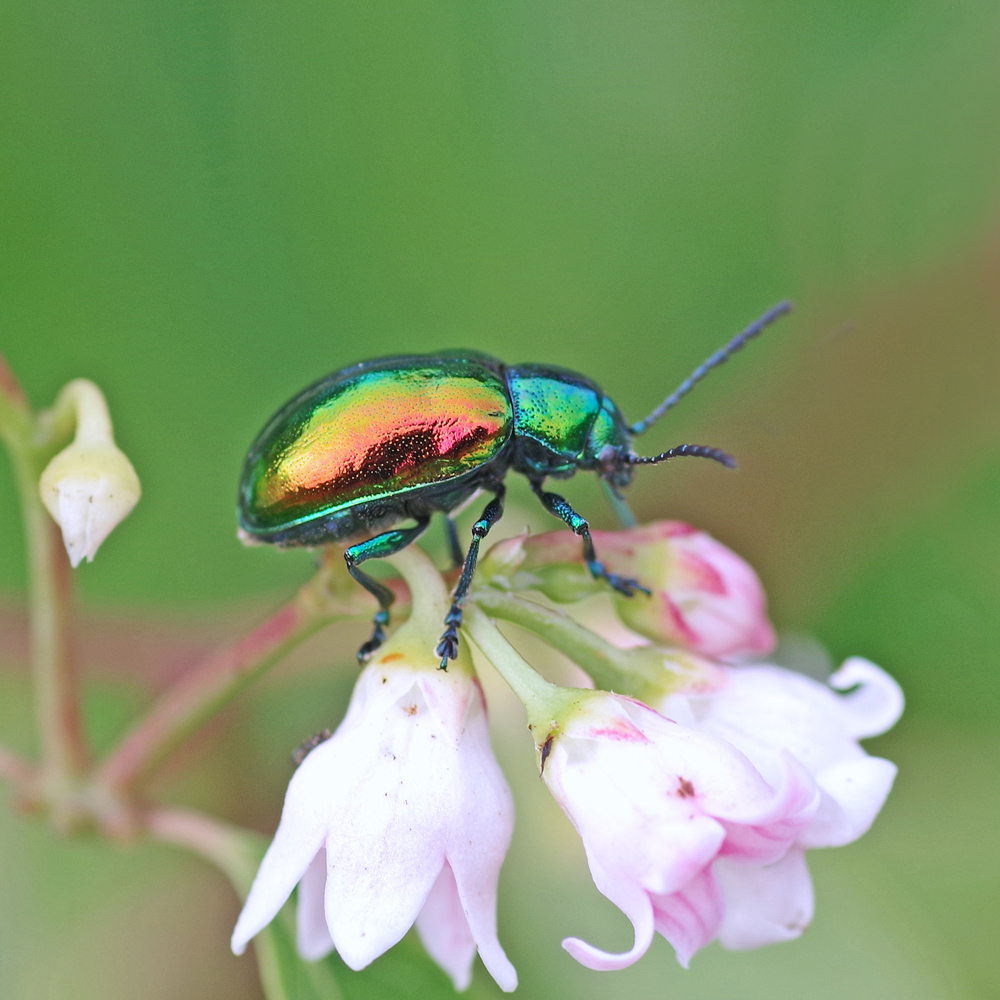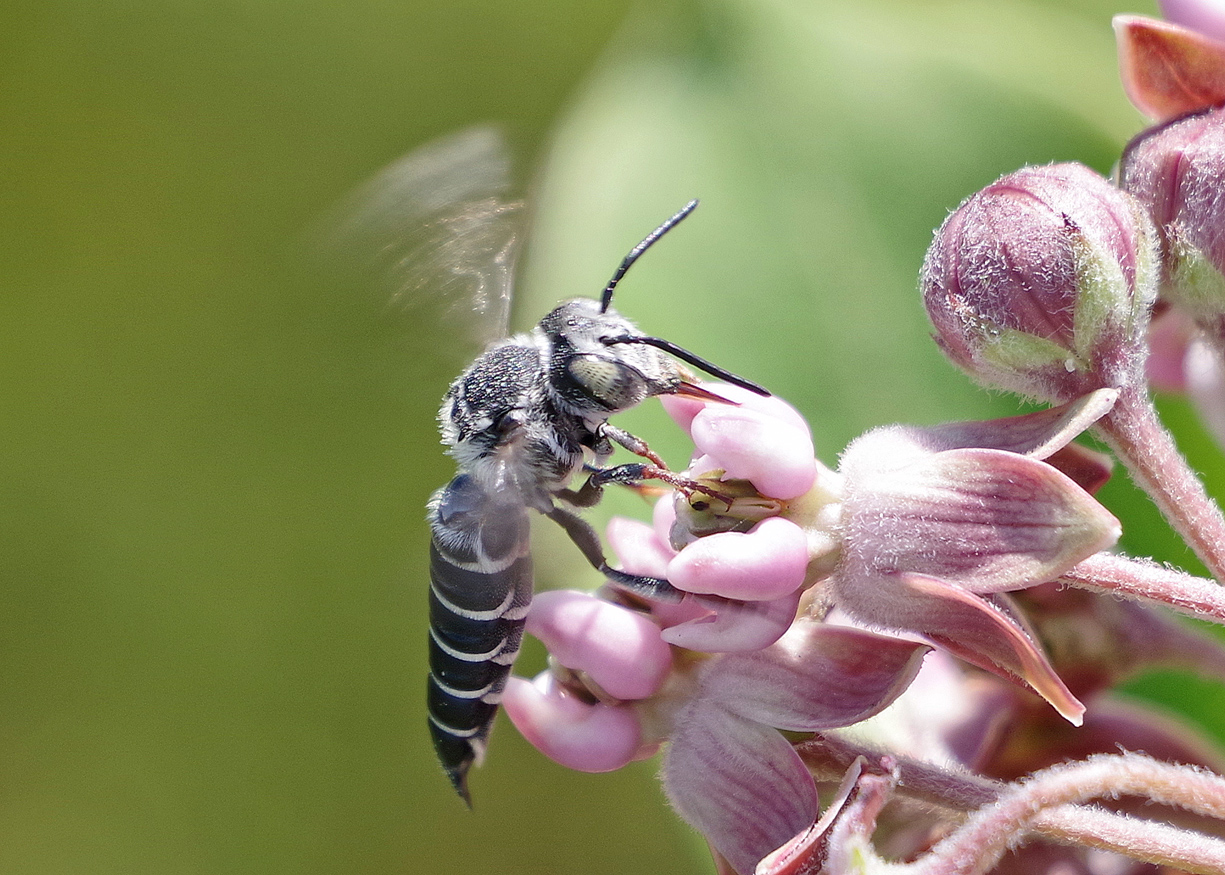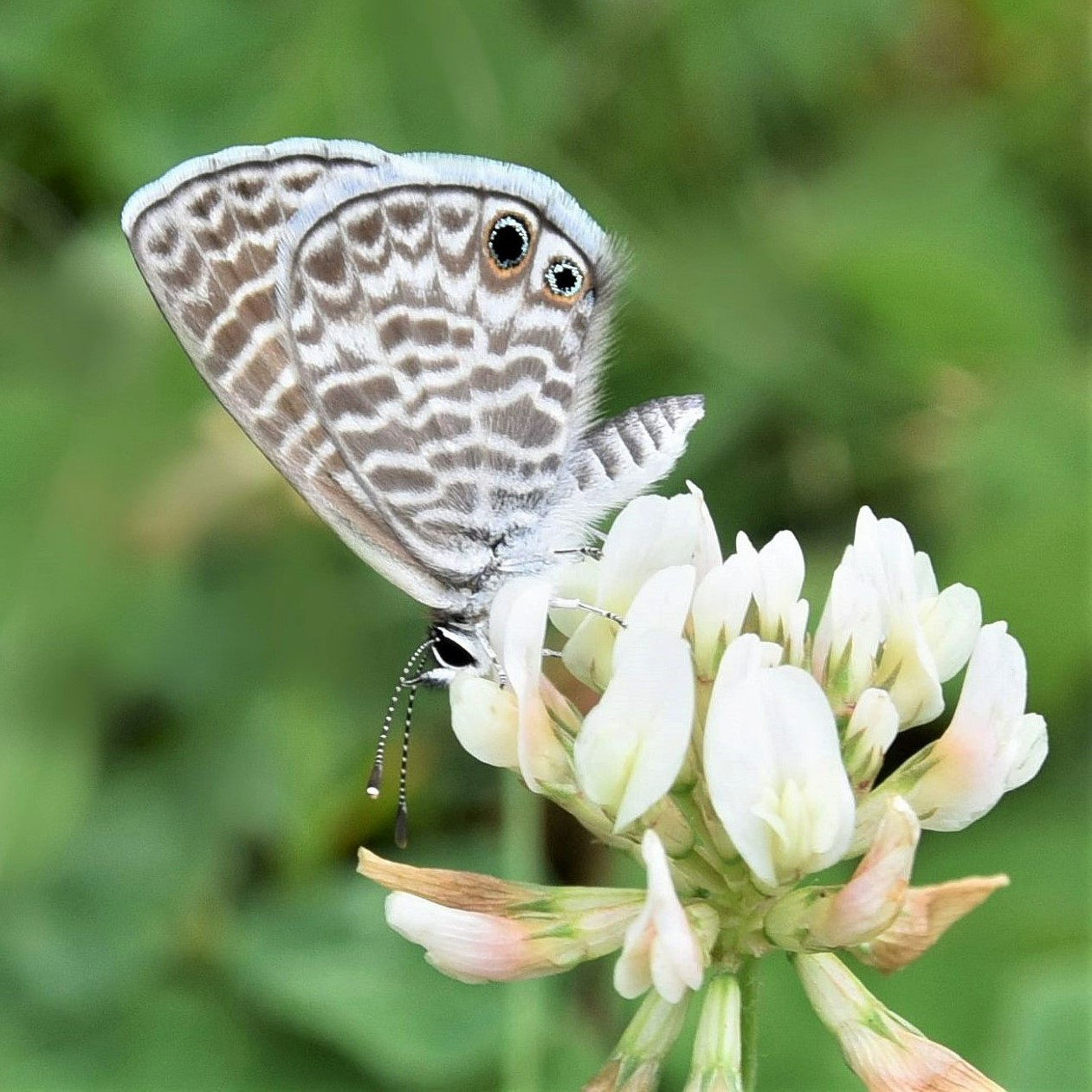Howdy, BugFans,
Ever since she read about beewolves years ago, the BugLady has been hoping to photograph one so she could tell its story. She finally found one in the dunes at Kohler-Andrae State Park, and no – the Rose chafer beetle in the picture has nothing to fear from it, and vice versa.
Beewolves are small, solitary, mostly black wasps in the family Crabronidae, which we have met before in the person of Square-headed and Sand wasps. Our beewolf species look a lot alike (and they resemble a lot of other small, solitary wasps, too), but the BugLady thinks that this is a Sanborn’s beewolf (Philanthus sanbornii). They’re ½” to ¾” long (females are larger than males).
Their common name, beewolf, describes what they do, and their genus name, Philanthus, from the Greek for “lover of flowers,” describes where they do it. They’re also called digger wasps, bee-hunters, and bee-killer wasps. There are about 140 species of beewolves spread across North America (32 species), Europe, and Northern Africa, and the European beewolf (Philanthus triangulum), a honeybee specialist, is probably the most famous/most studied.
 09.16.22
09.16.22
